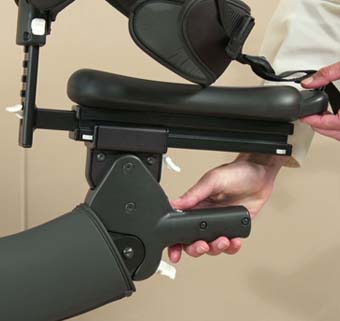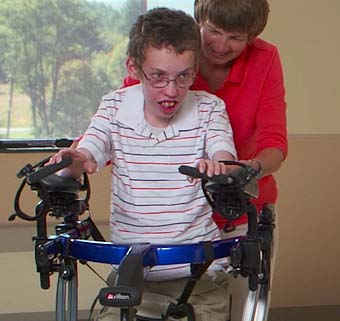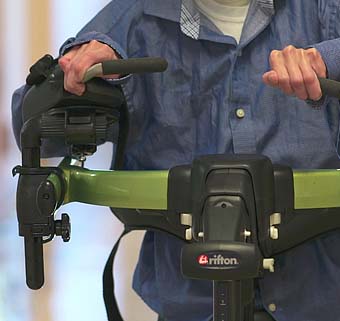Pacer Transfer Using the MPS
The Multi-Position Saddle (MPS) is the solution for easy, smoother transfers, especially for large or heavy clients. This short video shows the steps to quickly prepare, transfer and position a client for gait training.
Watch more videos in this series:
Getting to Know the MPS Adjustments
Pacer Transfer Using the MPS
Transcript of Video
Judy is thirty-three years old, has cerebral palsy and a condition that results in bowing of her legs. Her left leg is longer than her right. Because her skin is fragile and bruises easily, she wears elbow pads. Judy’s wheelchair footrests swing away and could also be removed if necessary.
The MPS saddle has been moved into position closer to the wheelchair seat and can be made level or with a slight posterior tilt for easier access.
Her wheelchair can be positioned close to the Dynamic Pacer, which has both the frame and the MPS lowered for ease of transfer. A simple two-person transfer slides Judy safely onto the MPS. The hip corral can be secured, and then the upper frame is raised to the appropriate height with the second caregiver assisting to lift up the frame as needed.
Once in a standing position, further adjustments can be made with the MPS. The white button immediately under the seat is pressed downward to enable forward or backward positioning of the saddle.
The white button on the handle is pressed down to adjust the saddle angle.
The white button under the handle is squeezed to fine-tune the height of the MPS. In Judy’s case, a little more height may help with clearance of her longer left leg.
Any other accessories in use are positioned and secured appropriately as well. Here we see the arm platform straps being attached.
Caster adjustments can make a big difference. The caregivers make sure the brakes are released before Judy starts walking.
Judy is actually able to take steps with a standard posterior walker, but steps are slow and she becomes more crouched as she fatigues, and requires moderate support from staff. In the Dynamic Pacer, however, Judy demonstrates better trunk control and requires minimal assistance from staff. She is even more motivated to interact with people from this device. And finally, Judy can walk longer distances with the Dynamic Pacer.



